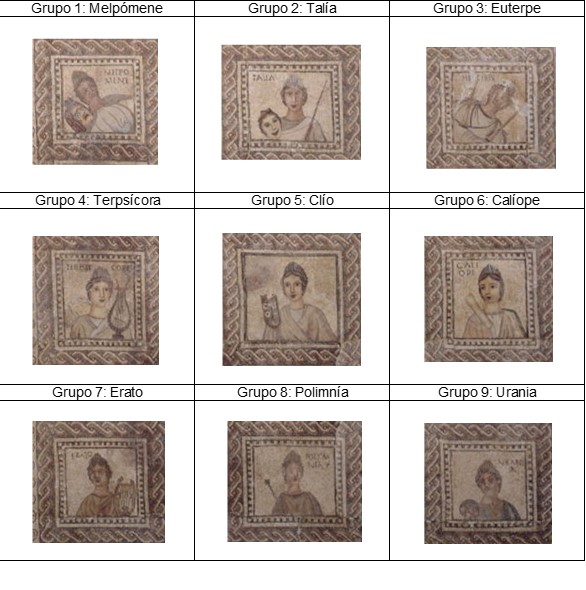We are musivarians
Characters:
Theme: The Roman mosaic
Competencies
Competence in Linguistic Communication
Personal, social and learning to learn competence
Competence in cultural awareness and expressions
Subjects and year by Educational System
Spain > Classical culture > 2nd ESO > Continuity of cultural heritage. Literature, art and science
Enunciation
Observations and context
Corinna is part of the extensive but poorly known group of Greek poetesses. She is said to have been a disciple of the poetess Myrtis and to have rivaled Pindar himself. Although the local nature of her work prevented it from being widely disseminated at first, interest in Corinna and her poetry resurfaced at the end of Hellenism. The Greek poet Antipater of Thessalonica (1st century BC) included her in one of his epigrams as one of the Nine Muses of ancient lyric poetry, among which were, in his opinion, those of the highest quality.
To explain the mosaic technique, we will look at the polychrome specimen found in Moncada (August 19th, 1920), which must have belonged to the cubiculum or rectangular bedroom of a Roman villa from the imperial era (first half of the 3rd century, Opus tessellatum, tesserae from marble and glass paste, with dimensions 698.5 x 611 cm) dedicated to the Nine Muses, daughters of Mnemosyne and Zeus, conceived during nine consecutive nights. Each one is represented as a bust, with the name and their characteristic attribute below. The ensemble is completed with a squared surface, decorated with geometric elements and framed with a band composed of saw teeth and posts.
The author's Fragment 1 (PMG 655), where she mentions one of the Nine Muses, is photocopied for group reading.
Once the mosaic technique has been explained and the aforementioned one has been given as an example, the teacher hands out the photocopy of Fragment 1 (PMG 655) by Corinna, in which the Muse Terpsichora is mentioned.
Based on the preserved fragment and the mosaic shown, 9 groups are formed with the students. Each group will start by cutting the plasticine into tesserae and grouping it by colours. On the wooden tablet they will draw the sketch of the assigned Muse to fill it with the glued tesserae. Once the mosaic is finished, they will have to give it a coat of varnish and join all the tablets to emulate the Moncada mosaic.
Necessary materials:
- Photocopied image of the allotted Muse.
- Coloured plasticine.
- Wooden boards (size DIN A3 or DIN A4).
- Knife for plasticine.
- Glue.
- Brush.
- Varnish for plasticine.


This activity has been assigned to 2nd of ESO, but it can also be done in other courses.
Description
The mosaic technique in Rome is explained, as well as the types of opus and the purpose of said decorative art, using the polychrome mosaic dedicated to the Nine Muses, which was found in Moncada.